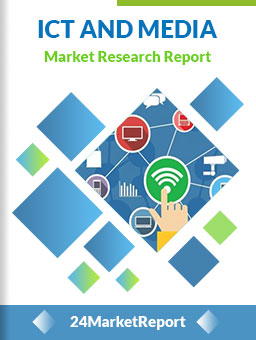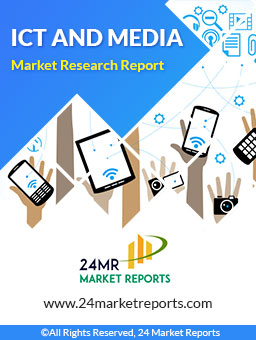
Download FREE Report Sample
Download Free sampleMARKET INSIGHTS
Global Enterprise Mobility Solutions and Management Services market size was valued at USD 1698 million in 2024. The market is projected to grow from USD 1865 million in 2025 to USD 3185 million by 2032, exhibiting a CAGR of 9.6% during the forecast period.
Enterprise Mobility Solutions and Management Services comprise a suite of technologies designed to securely enable workforce mobility while protecting corporate data. These solutions encompass mobile device management (MDM), application management (MAM), content management (MCM), and identity management - collectively known as EMM (Enterprise Mobility Management). The ecosystem allows organizations to implement bring-your-own-device (BYOD) policies while maintaining security compliance.
The market growth is being driven by the rapid adoption of remote work policies, increasing mobile workforce demands, and stricter data protection regulations. Digital transformation initiatives across industries are accelerating adoption, particularly in healthcare, finance, and retail sectors where secure mobile access is critical. Major players like IBM, Citrix, and Blackberry continue to innovate with AI-powered security features and cloud-based management platforms to address evolving enterprise needs.
Accelerated Digital Transformation Across Industries Fuels Adoption
The rapid pace of digital transformation across industries has emerged as a primary driver for enterprise mobility solutions. Organizations are actively transitioning to cloud-based infrastructures and remote work models, necessitating robust mobility management platforms. Recent data indicates that over 72% of enterprises have accelerated their digital transformation timelines compared to pre-pandemic plans. This shift has created substantial demand for mobile device management (MDM) and mobile application management (MAM) solutions that ensure secure access to corporate resources from any location. Financial services alone account for nearly 30% of current enterprise mobility adoption, demonstrating how mission-critical these solutions have become for data-sensitive industries.
BYOD Policies and Remote Work Culture Drive Market Expansion
To know more about market statistics, Download a FREE Sample copy
The widespread adoption of Bring Your Own Device (BYOD) policies continues to propel market growth, with current adoption rates exceeding 60% among mid-sized and large enterprises. This trend, coupled with the permanent shift toward hybrid work models, has made enterprise mobility management indispensable for maintaining productivity while enforcing security protocols. The average enterprise now manages 2.8 mobile devices per employee, creating complex device ecosystems that require centralized management platforms. Leading vendors have responded with advanced containerization technologies that create secure work environments on personal devices without compromising employee privacy or corporate data security.
Increasing cybersecurity threats targeting mobile endpoints further accelerate adoption, with mobile malware incidents growing by approximately 32% annually.
➤ Major industry players like Citrix and IBM have recently introduced AI-powered threat detection features in their mobility suites, helping organizations proactively identify and neutralize mobile security risks.
Furthermore, the integration of advanced analytics into mobility platforms enables real-time monitoring of device health, app performance, and potential security breaches, making these solutions increasingly valuable for IT decision-makers.
Data Privacy Regulations Create Implementation Complexities
The evolving landscape of data privacy regulations presents significant challenges for enterprise mobility adoption. With over 130 countries now implementing comprehensive data protection laws, organizations face mounting compliance burdens when deploying cross-border mobility solutions. GDPR in Europe and similar regulations in other regions impose strict requirements for data localization, user consent management, and breach notification - all of which complicate mobility implementations. Many enterprises report spending up to 40% more on regulatory compliance compared to five years ago, with mobility solutions requiring ongoing adjustments to maintain compliance across different jurisdictions. This regulatory complexity particularly impacts multinational corporations operating in multiple geographies with conflicting data governance requirements.
Additional Regulatory Hurdles
Industry-Specific Compliance Standards
Highly regulated sectors like healthcare and finance face additional mobility challenges, with standards such as HIPAA and GLBA mandating specialized security controls that can limit the flexibility of standard mobility solutions.
Cross-Border Data Transfer Restrictions
Recent limitations on international data flows, particularly between the EU and US, have forced enterprises to deploy regional mobility infrastructure rather than global platforms, increasing costs and operational complexity.
Integration with Legacy Systems Creates Deployment Hurdles
Despite the clear benefits of enterprise mobility solutions, many organizations struggle with integrating new platforms into existing IT ecosystems. Approximately 45% of enterprises report significant challenges when connecting modern mobility management tools with legacy ERP, CRM, and proprietary business applications. These integration difficulties often lead to extended deployment timelines, with average implementation periods stretching 30-45% longer than initially projected. The problem compounds as businesses maintain hybrid environments during transition periods - a recent survey found that nearly 60% of companies operate both cloud-based and on-premises mobility solutions simultaneously, creating management complexities and potential security gaps.
Other Technical Barriers
Varied Mobile Platform Support
The fragmentation of mobile operating systems and device types forces enterprises to maintain multiple management protocols, with iOS, Android, and emerging platforms each requiring specialized configurations.
Performance Consistency Issues
Network variability across locations and connectivity types often leads to inconsistent application performance, particularly for bandwidth-intensive enterprise mobile apps used in field service and logistics operations.
Emerging Technologies Create New Mobility Solution Horizons
The integration of advanced technologies into enterprise mobility platforms presents substantial growth opportunities. Artificial intelligence and machine learning are transforming mobility management through predictive analytics for device maintenance, automated threat detection, and intelligent app distribution. The AI-enhanced mobility solutions segment is projected to grow at nearly double the rate of conventional platforms over the next five years. Similarly, the incorporation of 5G capabilities enables next-generation mobile applications with enhanced speed and reliability, opening new possibilities for real-time collaboration and field service automation. Early 5G mobility implementations in manufacturing and healthcare demonstrate throughput improvements exceeding 300% compared to 4G LTE solutions.
Sector-Specific Solutions Drive Vertical Market Expansion
Vertical-specific mobility solutions represent another significant opportunity, with specialized platforms emerging for industries like healthcare, retail, and manufacturing. The healthcare mobility market alone is growing at 20% annually, driven by the need for secure mobile access to electronic health records and diagnostic tools. Similarly, retail organizations are adopting mobile point-of-sale and inventory management solutions at unprecedented rates, with adoption increasing by 28% year-over-year in 2023. These industry-tailored platforms combine general mobility management capabilities with sector-specific features, creating premium-priced offerings with higher margins for solution providers.
➤ Recent partnerships between mobility providers and industry leaders have yielded innovative solutions like Honeywell's connected worker platform for industrial environments, combining device management with augmented reality and IoT integration.
Software Segment Leads Due to Rising Adoption of Mobile Device Management Platforms
The market is segmented based on type into:
Software
Subtypes: Mobile Device Management, Mobile Application Management, Mobile Content Management, Others
Services
Subtypes: Implementation, Training & Support, Consulting, Others
Mobile Device Management Dominates as Enterprises Focus on Security & Compliance
The market is segmented based on application into:
Mobile Device Management
Mobile Application Management
Mobile Content Management
Mobile Identity Management
Others
Large Enterprises Lead Adoption While SMEs Show Rapid Growth
The market is segmented based on organization size into:
Large Enterprises
Small & Medium Enterprises
IT & Telecom Sector Accounts for Major Market Share
The market is segmented based on end-user industry into:
IT & Telecom
BFSI
Healthcare
Retail
Manufacturing
Others
Strategic Partnerships and Technological Advancements Drive Market Competition
The global enterprise mobility solutions and management services market features a dynamic competitive landscape characterized by the presence of established technology giants, specialized solution providers, and emerging innovators. This market, valued at $1.7 billion in 2024 and projected to reach $3.2 billion by 2032, is witnessing intensified competition as organizations prioritize secure mobile workforce enablement.
Citrix Systems (now part of Cloud Software Group) maintains a leadership position due to its comprehensive mobile device management (MDM) and virtual desktop infrastructure (VDI) solutions. Their XenMobile platform continues to gain traction among large enterprises requiring advanced security features and seamless integration with existing IT infrastructure.
IBM and BlackBerry remain significant competitors, leveraging their enterprise security expertise to offer robust mobility management platforms. IBM's MaaS360 has seen particular success in regulated industries, while BlackBerry's transition from hardware to cybersecurity solutions has positioned it strongly in the EMM space.
The market also features several agile innovators disrupting traditional approaches. ManageEngine has captured significant market share among SMBs through cost-effective, user-friendly solutions. Their Mobile Device Manager Plus offering demonstrates how specialized providers can compete effectively against larger players by addressing niche requirements.
Emerging trends show established players expanding through strategic partnerships—Microsoft's integration of Intune with Azure Active Directory exemplifies this approach. Meanwhile, regional specialists like Space O Technologies and Peerbits are gaining prominence by offering customized mobility solutions tailored to local regulatory environments and business practices.
Citrix Systems, Inc. (U.S.)
IBM Corporation (U.S.)
BlackBerry Limited (Canada)
Honeywell International Inc. (U.S.)
ManageEngine (U.S.)
Space O Technologies (India)
Peerbits (India)
Octal Software (India)
Credencys (U.S.)
Nex Mobility (U.S.)
Brainvire (U.S.)
The enterprise mobility market is experiencing unprecedented growth, largely fueled by the rapid adoption of cloud-based solutions. Over 82% of enterprises now leverage cloud platforms for their mobility strategies, citing improved scalability and cost-efficiency. Modern solutions integrate advanced containerization technologies, enabling seamless deployment across multiple device ecosystems. Furthermore, the emergence of zero-trust security frameworks has transformed how organizations manage remote access, ensuring data protection without compromising workforce productivity. As hybrid work models become standard practice, the demand for cloud-native enterprise mobility management (EMM) solutions is expected to grow by 11% annually through 2026.
AI-Powered Automation in Mobile Management
Artificial intelligence is revolutionizing enterprise mobility through predictive analytics and automated device management. Advanced algorithms now enable self-healing applications that detect and resolve technical issues before users report them, reducing IT support costs by an estimated 30%. Machine learning models analyze user behavior patterns to optimize device performance and battery life across enterprise fleets. Additionally, AI-driven threat detection systems process over 10,000 security signals per second, providing real-time protection against evolving mobile threats.
The global deployment of 5G networks is unlocking new capabilities for enterprise mobility solutions. With latency reduced to under 10 milliseconds, businesses are deploying real-time collaborative applications that were previously impractical. Industries like healthcare now utilize AR-assisted mobile diagnostics with 5G's enhanced bandwidth, while manufacturing sectors adopt mobile-controlled IoT equipment. The number of 5G-connected enterprise devices is projected to exceed 500 million by 2025, accelerating demand for 5G-optimized mobility management platforms that can handle these high-speed, high-volume data requirements.
North America
North America dominates the enterprise mobility solutions market, holding the largest revenue share in 2024. The region's leadership stems from rapid adoption of mobile-first workplace strategies, stringent data security regulations (such as GDPR compliance for multinationals), and significant investments in corporate IT infrastructure. The U.S. accounts for over 75% of regional demand, driven by sectors like healthcare (telemedicine adoption), finance (secure mobile banking), and logistics (real-time fleet management). Key players such as IBM, Citrix, and Blackberry have strengthened their unified endpoint management (UEM) solutions to address growing cybersecurity threats. While Canada shows steady growth, Mexico lags slightly due to fragmented SME adoption, though nearshoring trends are boosting demand for mobile workforce tools.
Europe
Europe’s market thrives on rigid data privacy laws (including GDPR) and widespread enterprise digitization. Germany and the U.K. lead in adopting Mobile Application Management (MAM) solutions, particularly in manufacturing (for IoT-enabled equipment monitoring) and banking (secure customer onboarding). The EU’s emphasis on digital sovereignty has spurred demand for locally hosted mobility platforms, benefiting vendors like SOTI and ManageEngine. However, growth faces headwinds from economic stagnation in Southern Europe and complex compliance requirements across member states. Scandinavia excels in Mobile Identity Management adoption, leveraging national e-ID systems for seamless authentication.
Asia-Pacific
Asia-Pacific is the fastest-growing region, projected to surpass North America by 2032. China’s “Internet+” initiative and India’s Digital India campaign are accelerating mobile workforce adoption, with Japan and South Korea focusing on 5G-enabled enterprise mobility. The region uniquely blends demand for low-cost Mobile Device Management (MDM) solutions (dominant in Southeast Asia) with advanced AI-driven mobility platforms in tech hubs like Singapore. Challenges include fragmented regulations—for instance, China’s CAC restrictions on foreign cloud services compel localized deployments. India’s market, though price-sensitive, sees 25%+ annual growth in SMB SaaS-based EMM solutions.
South America
Market growth here is uneven, with Brazil accounting for 60% of regional revenue. Industries like agribusiness (mobile field service apps) and mining (remote site communications) drive demand, but economic volatility limits large-scale deployments. Argentina shows promise in fintech mobility solutions, albeit constrained by currency instability. Providers face challenges in monetizing bring-your-own-device (BYOD) policies due to low corporate IT budgets, though hybrid work models post-pandemic are creating niche opportunities for cloud-based EMM vendors.
Middle East & Africa
The UAE and Saudi Arabia lead in enterprise mobility adoption, fueled by smart city projects (e.g., NEOM) and oil/gas sector digitization. Mobile Content Management (MCM) solutions are prioritized for secure document sharing in construction and healthcare. Africa’s growth is nascent but rising, with Kenya and Nigeria leveraging mobile money platforms to drive EMM in banking. Key barriers include inadequate digital infrastructure in rural areas and reliance on international vendors—local players like Nex Mobility are emerging to offer cost-optimized solutions.
This market research report offers a holistic overview of global and regional markets for the forecast period 2025–2032. It presents accurate and actionable insights based on a blend of primary and secondary research.
✅ Market Overview
Global and regional market size (historical & forecast)
Growth trends and value/volume projections
✅ Segmentation Analysis
By product type or category
By application or usage area
By end-user industry
By distribution channel (if applicable)
✅ Regional Insights
North America, Europe, Asia-Pacific, Latin America, Middle East & Africa
Country-level data for key markets
✅ Competitive Landscape
Company profiles and market share analysis
Key strategies: M&A, partnerships, expansions
Product portfolio and pricing strategies
✅ Technology & Innovation
Emerging technologies and R&D trends
Automation, digitalization, sustainability initiatives
Impact of AI, IoT, or other disruptors (where applicable)
✅ Market Dynamics
Key drivers supporting market growth
Restraints and potential risk factors
Supply chain trends and challenges
✅ Opportunities & Recommendations
High-growth segments
Investment hotspots
Strategic suggestions for stakeholders
✅ Stakeholder Insights
Target audience includes manufacturers, suppliers, distributors, investors, regulators, and policymakers
-> Key players include ManageEngine, Space O Technologies, Peerbits, Octal Software, Citrix, Blackberry, IBM, Credencys, Nex Mobility, Brainvire, and Honeywell, among others.
-> Key growth drivers include rising BYOD adoption, increasing cybersecurity threats, digital transformation initiatives, and demand for cloud-based mobility solutions.
-> North America currently leads the market, while Asia-Pacific is expected to witness the fastest growth due to rapid digitalization and mobile workforce expansion.
-> Emerging trends include AI-powered mobile management, zero-trust security models, 5G-enabled enterprise mobility, and unified endpoint management solutions.

Speak to our Custom Research Team and get the Custom Research in a budget
Custom ResearchFrequently Asked Questions ?
A license granted to one user. Rules or conditions might be applied for e.g. the use of electric files (PDFs) or printings, depending on product.
A license granted to multiple users.
A license granted to a single business site/establishment.
A license granted to all employees within organisation access to the product.
Upto Working 24 to 48 hrs
Upto 72 hrs max - Weekends and Public Holidays
Online Payments with PayPal and CCavenue
Wire Transfer/Bank Transfer
Hard Copy




 Industry Market Size
Industry Market Size SWOT Analysis
SWOT Analysis Industry Major Players
Industry Major Players Revenue Forecasts
Revenue Forecasts Historical and Forecast Growth
Historical and Forecast Growth Profitability Analysis
Profitability Analysis
























